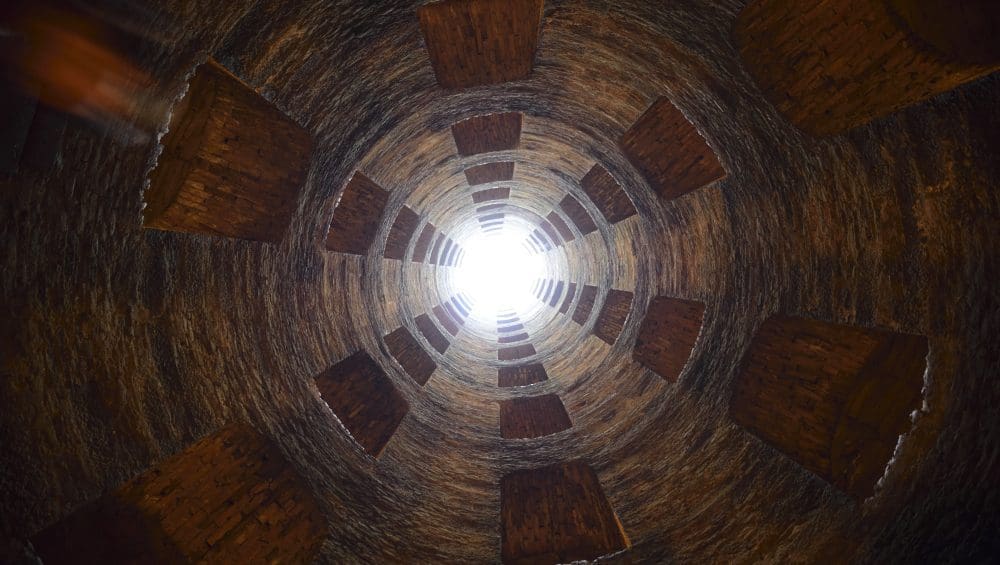It was the year 1527 when the Florentine architect Antonio da Sangallo the Younger was commissioned to build a Well in the heart of the city of Orvieto, a work that would later prove to be a real pioneering and avant-garde enterprise.
The task was ordered by the then Pope Clement VII, during the Sack of Rome, who wanted to give the city that gave him refuge (after having arrived there disguised as a greengrocer), a supply of water that was always available, especially during difficult periods such as sieges (or famines). A medal was also minted later, now kept in the Vatican Museums, with the engraving “ut populus bibat” – “for the people to drink”.
Initially the Pope had imagined the Pozzo for use in the fortified fortress of the Albornoz Fortress (hence the name “Pozzo della Rocca”). We have to wait for the 1800s for the current name Pozzo di San Patrizio.
Renaissance avant-garde
The architect Sangallo designed the cylindrical well, 58 meters deep, starting and taking inspiration from the spiral staircase of the Villa del Belvedere in the Vatican with a helicoidal design of steps (248) designed so that no traffic jams were created. and in fact whoever went down and whoever went up had their own “way” free, especially those who went there with mules.
There are 72 windows that illuminate the well until it reaches the semi-darkness in depth, where there is a small bridge connecting the two stairways.
The Well, completed in 1537, was built by digging into the tuff (Orvieto is famous precisely for its tufaceous soils and tuff tunnels where many famous Orvieto wines are kept and refined today) and then into the clay up to the aquifer of natural origin.
At the entrance you read “quod natura munimento inviderat industry adiecit – what nature had not given, industry procured”, a clear celebration of human ingenuity at the service of nature.
The Well and Ireland
As mentioned, the name Pozzo di San Patrizio, arrived in the 1800s at the behest of the friars of the Convento dei Servi who were aware of the legend of the “Irish saint”, St. Patrick, guardian of a cave so deep that it did not have a bottom enough to be recognized as St. Patrick’s Purgatory (and once it reached the bottom by overcoming the “tests” it was then possible to enter Paradise) and that the well was even connected to Ireland, where the Saint did the work of evangelization, and often found in the Well a time for reflection and prayer. Thus it was that the Pozzo became a sacred rather than a military destination. Today a tourist and cultural destination of great impact and emotion.



